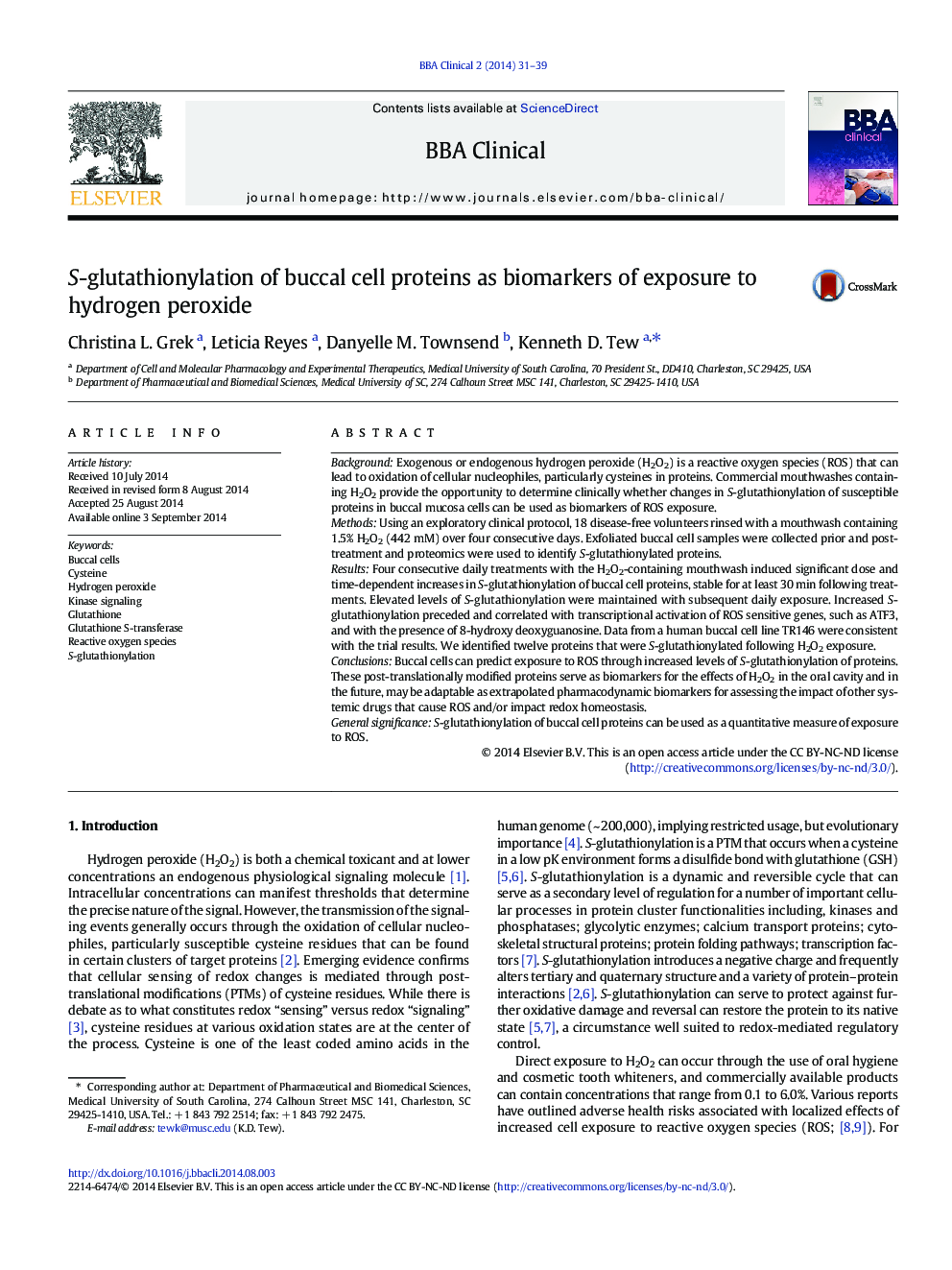| کد مقاله | کد نشریه | سال انتشار | مقاله انگلیسی | نسخه تمام متن |
|---|---|---|---|---|
| 2773215 | 1567900 | 2014 | 9 صفحه PDF | دانلود رایگان |

• Hydrogen peroxide is both a toxin and an endogenous signaling molecule.
• The use of hydrogen peroxide mouthwash causes ROS mediated damage in cheek cells.
• S-glutathionylated proteins are biomarkers for this damage.
• S-glutathionylated proteins may be of future value as pharmacodynamic markers.
BackgroundExogenous or endogenous hydrogen peroxide (H2O2) is a reactive oxygen species (ROS) that can lead to oxidation of cellular nucleophiles, particularly cysteines in proteins. Commercial mouthwashes containing H2O2 provide the opportunity to determine clinically whether changes in S-glutathionylation of susceptible proteins in buccal mucosa cells can be used as biomarkers of ROS exposure.MethodsUsing an exploratory clinical protocol, 18 disease-free volunteers rinsed with a mouthwash containing 1.5% H2O2 (442 mM) over four consecutive days. Exfoliated buccal cell samples were collected prior and post-treatment and proteomics were used to identify S-glutathionylated proteins.ResultsFour consecutive daily treatments with the H2O2-containing mouthwash induced significant dose and time-dependent increases in S-glutathionylation of buccal cell proteins, stable for at least 30 min following treatments. Elevated levels of S-glutathionylation were maintained with subsequent daily exposure. Increased S-glutathionylation preceded and correlated with transcriptional activation of ROS sensitive genes, such as ATF3, and with the presence of 8-hydroxy deoxyguanosine. Data from a human buccal cell line TR146 were consistent with the trial results. We identified twelve proteins that were S-glutathionylated following H2O2 exposure.ConclusionsBuccal cells can predict exposure to ROS through increased levels of S-glutathionylation of proteins. These post-translationally modified proteins serve as biomarkers for the effects of H2O2 in the oral cavity and in the future, may be adaptable as extrapolated pharmacodynamic biomarkers for assessing the impact of other systemic drugs that cause ROS and/or impact redox homeostasis.General significanceS-glutathionylation of buccal cell proteins can be used as a quantitative measure of exposure to ROS.
Journal: BBA Clinical - Volume 2, December 2014, Pages 31–39